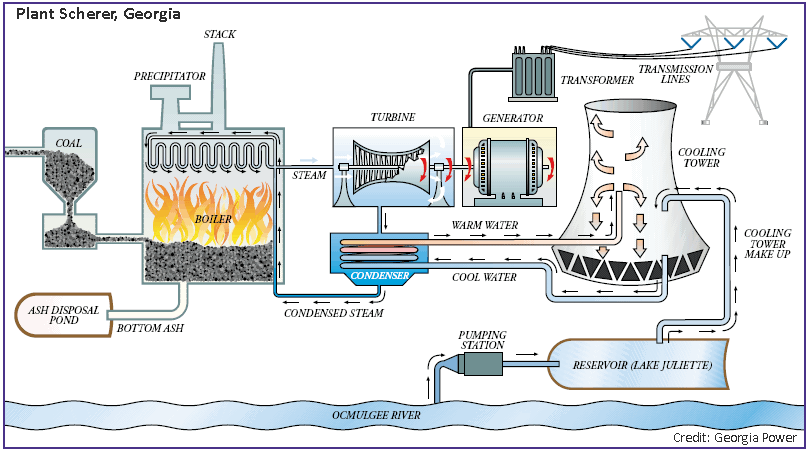
SACE staffer Amelia Shenstone contributed to this piece.
The ALS Ice Bucket Challenge has riveted the country, and it was only a matter of time before people started complaining about the quantity of water being used (“wasted” some may say). How bad is the water waste, really? Let’s find out.
An article from the New York Times noted that as of August 21st, over 739,000 new donors have contributed to the ALS Association. For simplicity, and some forward looking projection estimates, let’s assume 1,000,000 people have dumped water on their head recently for some noble cause. Let’s also assume each of those people used a full five-gallon bucket filled to the brim with icy water. After some easy math, we can figure that about 5 million gallons of water may have been used (or if you prefer ‘wasted’) over the past couple months nationwide.
That’s certainly a lot of water, and we’re glad folks are thinking about it. But do you know what uses even more water? Our power plants. For example, Plant Scherer, a coal-fired power plant in Georgia, “loses” about 8,000 gallons of water from evaporation – every minute. That one single coal-fired power plant loses as much water every 10 hours as the entirety of the ALS ice bucket challenge has to date. For comparison sake, if Plant Scherer were an ALS ice bucket nominee, and if each “dousing” raised $100 for charity, then this one coal plant would donate $230.4 million each day (or $84 BILLION annually – that’s 16,819,200,000 gallons of water).
Nationally, steam-powered electric plants evaporate between 2.8 and 5.9 billion gallons per day. About 65% of that evaporation is by coal plants, and most of the rest is nuclear.
To understand why that is, let’s look at Plant Scherer’s schematics:

Water is withdrawn from the Ocmulgee river and enters into the power station. Coal is burned to boil the water into steam, which builds pressure to turn a turbine, which then turns a generator to create electricity. Before it can be heated into high-pressure steam again, it has to be cooled, a process that requires more water, much of which evaporates in a cooling tower. Evaporated water is of very little use until it travels through the water cycle and gets rained back to earth somehow at some point in the future. For all practical purposes, evaporated water is useless to humans.
The Energy and Water in a Warming World (EW3) Initiative, a project hosted by the Union of Concerned Scientists to research exactly this issue, found in 2011 that “It requires more water, on average, to generate the electricity that lights our rooms, powers our computers and TVs, and runs our household appliances, than the total amount of water we use in our homes for everyday tasks—washing dishes and clothes, showering, flushing toilets, and watering lawns and gardens.” We highly recommend checking out UCS’s Water-Smart Power report and other resources.
Another comparison between the ALS Ice Bucket Challenge and water-intensive power generation is this: you don’t have to dump water on your head to donate to a charity, and you don’t have to waste water to generate electricity. Wind energy and solar power use no water to generate electricity. And whether you do the traditional ice bucket challenge or a more creative take on it, know that compared to dirty power plants, your 5 gallons are…wait for it… a drop in the bucket.